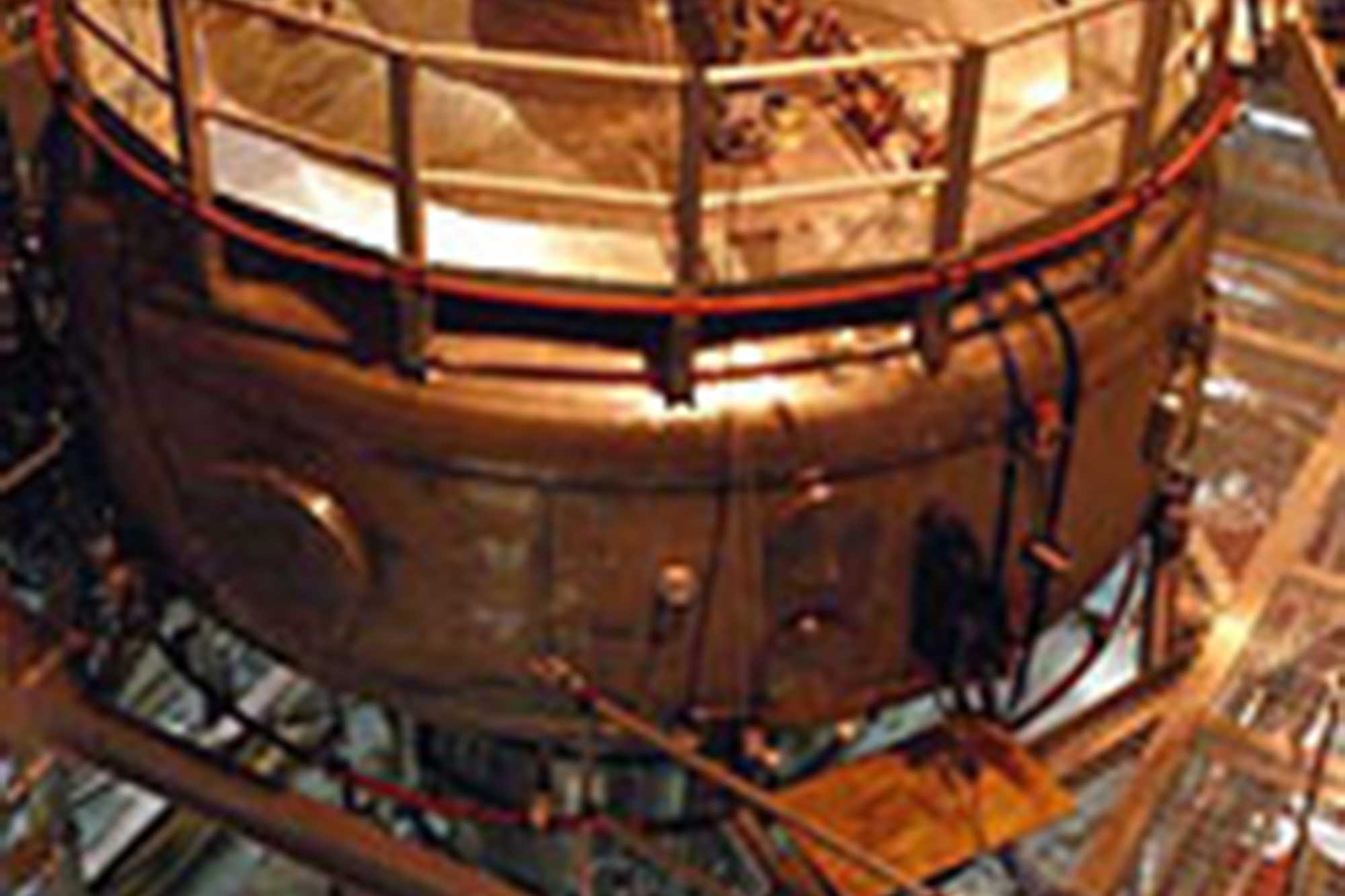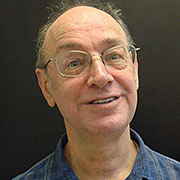
A novel device built by MIT and Columbia University researchers suggests that nature’s way of trapping hot, ionized gases called plasma could one day provide a means of harnessing nuclear fusion. In their device, a half-ton, doughnut-shaped superconducting magnet levitated inside a huge vacuum vessel creates a magnetic field that-like the strong magnetic field around Jupiter-can hold onto plasma, even as temperatures and pressures rise.
Fusion occurs when light nuclei such as hydrogen combine to form heavier nuclei such as helium, generating vast amounts of energy in the process. But designing a device to capture that energy is difficult. Hydrogen nuclei are positively charged, so they repel one another. The trick, then, is to crowd hydrogen nuclei together and give them lots of energy so that they hit each other despite their repulsion. A device capable of confining hot, dense plasma long enough for fusion to occur could provide the world with abundant energy with virtually no harmful byproducts or greenhouse gas emissions.
For decades, researchers at MIT and elsewhere have been working on a confinement design called the tokamak, a giant doughnut-shaped vacuum chamber surrounded by magnets that send plasma particles spiraling inside the doughnut. But a team led by Jay Kesner, senior scientist at MIT’s Plasma Science and Fusion Center, and Michael Mauel, professor of applied physics at Columbia, is taking a different approach-an approach inspired by the planets.
“Satellites that went past Jupiter in the 1980s discovered a relatively high pressure plasma surrounding Jupiter,” said Kesner. Holding the plasma in place is the planet’s strong magnetic field. The Levitated Dipole Experiment, or LDX, is intended to recreate Jupiter’s magnetic field in an Earth-bound lab at MIT.
The LDX concept calls for floating a superconducting ring the size and shape of a freight-truck tire inside a vacuum chamber-a metal canister 4 meters high and 5 meters wide. To start out, the superconducting ring is cooled to a few degrees above absolute zero and has an electrical current induced inside it. It is then mechanically lifted and held in place by an overhead magnet that counterbalances the force of gravity. As the ring floats, the electrical current inside it flows without resistance, creating a magnetic field that circles vertically around the ring.

The simple dipole field resembles the field around a magnetic planet, which loops from one pole to the other. But with no planet at the center and no supports to interfere, the field lines around the floating ring form continuous vertical circles. Plasma particles-formed by microwaving injected deuterium-are captured and carried round and round the outside of the coil, confined by the magnetic field lines. According to theory, this type of field should support fusion using just deuterium, a form of hydrogen abundant in seawater. Other proposed designs require deuterium plus tritium, a radioactive element that must be made in a “blanket” that surrounds the reactor.
Kesner, Mauel, and their team spent more than six years designing and building their novel experimental device, and in summer 2004, the LDX was ready for “concept exploration” experiments. Nuclear fusion was not the goal-at least not yet. At issue was simply how well the device’s magnetic field could confine plasma at rising pressures (a combination of temperature and density). As plasma heats up, it starts generating electrical currents that can undo the fields created by the magnet. “So the closer you get to conditions required for fusion, the more difficult it gets-the more ability the plasma has to defeat your confinement scheme,” Kesner explained.
Their confinement scheme performed well. The floating ring is not yet levitated but rather supported by several solid rods, which scrape off plasma. Even so, the plasma behaved as predicted. “With strong heating we got very substantial pressures, even with the losses going to the support rods,” said Kesner. And the electric current inside the ring kept flowing for hours at a time. An innovative insulation system maintained the ring’s low temperature even while plasma temperatures outside rose to hundreds of millions of degrees. “The results of our first experiments look very good, and it’s very exciting,” said Kesner.
Within the next few months, the team should be ready to remove the supports and perform the first levitated experiments-an important milestone, as the magnetic field lines will then circle the floating ring unimpeded. Results of those experiments will show whether this novel method of trapping hot plasma might one day be used to create a source of fusion power.
This research is supported by the US Department of Energy.